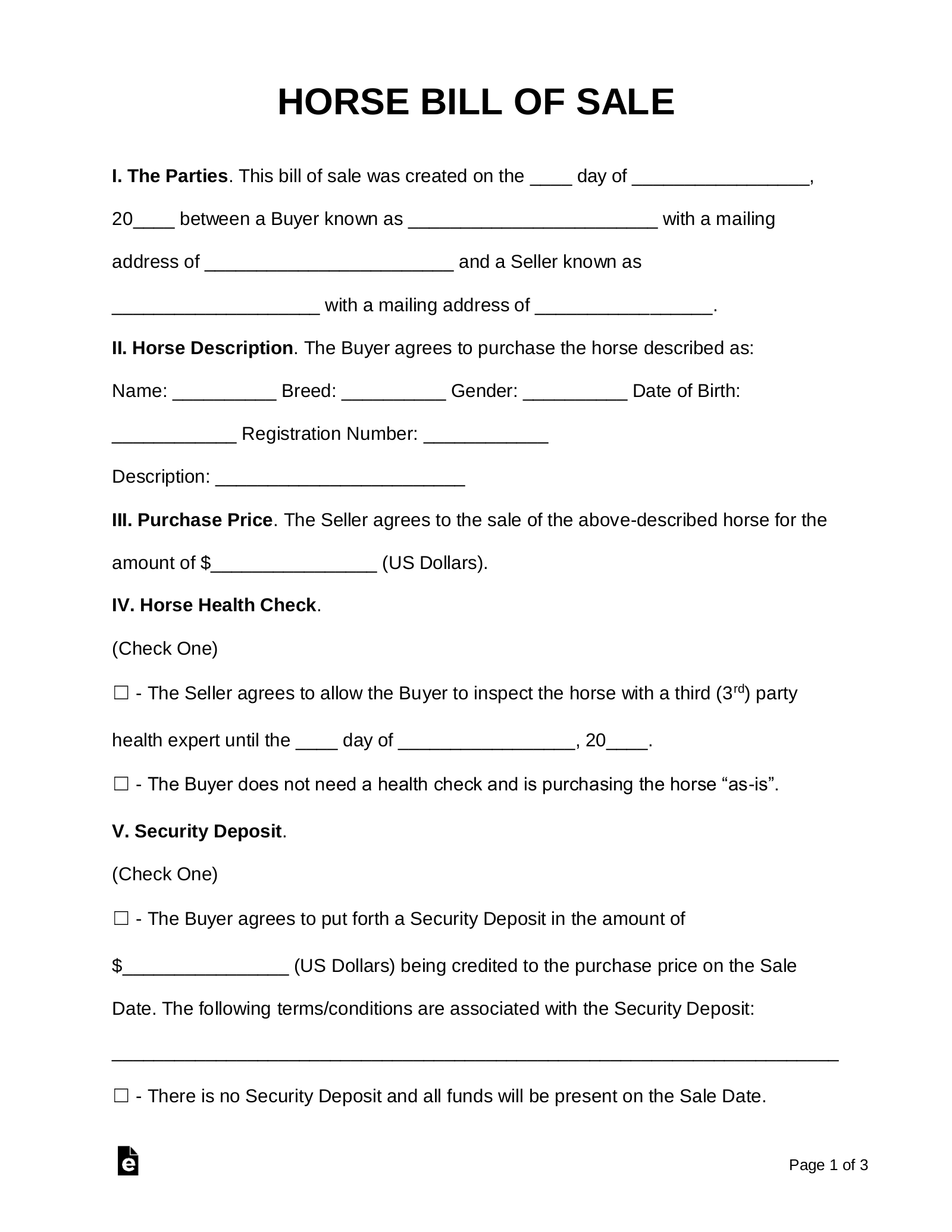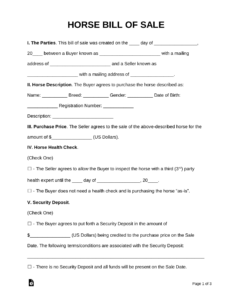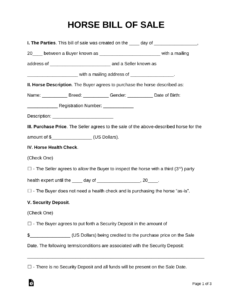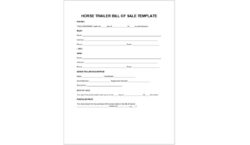Bringing a new horse into your life or saying goodbye to a beloved equine companion is a significant event, often filled with emotion and excitement. Whether you’re the buyer or the seller, this transition involves more than just a handshake and a transfer of reins. It’s a legal transaction that requires proper documentation to protect everyone involved, ensuring a smooth and clear transfer of ownership.
That’s where a well-crafted bill of sale comes into play. Think of it as your essential legal safety net, a document that clearly outlines the terms of the sale and details about the horse itself. Having a solid record of the transaction isn’t just a formality; it’s a crucial step that can prevent future misunderstandings or disputes, offering peace of mind to both parties as the horse embarks on its new chapter.
Why a Horse Bill of Sale is Your Best Friend
When it comes to buying or selling a horse, having a robust bill of sale isn’t just good practice; it’s absolutely vital. This document serves as the official record of the transaction, protecting both the buyer and the seller from potential future disagreements. Without it, you might find yourself in a sticky situation regarding ownership, the horse’s health, or the agreed-upon price. It clarifies all the terms, leaving little room for ambiguity once the horse has changed hands.

Imagine, for a moment, a scenario where a misunderstanding arises weeks after the sale regarding the horse’s health history or its temperament. If you don’t have a comprehensive bill of sale, resolving such issues can become incredibly complicated and potentially costly. This document acts as a clear reference point, outlining what was agreed upon and what disclosures were made, ensuring that both parties are held accountable for their parts of the agreement.
A properly drafted bill of sale should be comprehensive, detailing not just the horse but also the specific conditions of the sale. It’s about more than just a name and a price; it’s about providing a complete picture of the transaction. By laying everything out in black and white, you’re creating a foundation of trust and transparency that benefits everyone involved in the transfer of a magnificent animal.
Key Information to Include
- Full legal names, addresses, and contact information for both the buyer and the seller.
- Detailed description of the horse, including its registered name (if applicable), barn name, breed, sex, age, color, markings, registration number, and any unique identifiers like brands or scars.
- The agreed-upon purchase price and the method of payment.
- The exact date and time of the sale and transfer of possession.
- A clear statement about the horse being sold “as-is,” or any specific warranties if offered by the seller (which is rare in horse sales).
- Details about any pre-purchase examinations, including the date and the veterinarian’s name.
- Signatures of both the buyer and the seller, ideally witnessed, to confirm their agreement to the terms.
Navigating the Horse Sale Process with Ease
The journey of buying or selling a horse is often a mix of excitement and meticulous planning. Beyond the initial connection with the animal, there’s a significant amount of paperwork and due diligence that needs to be performed to ensure a smooth and legally sound transfer. It’s a process that requires attention to detail, but with the right tools, it can be managed with remarkable ease, minimizing stress for both the human and equine parties.
This is where a good bill of sale template horse becomes an invaluable asset. Instead of starting from scratch and potentially overlooking crucial details, a template provides a structured framework. It prompts you to fill in all the necessary information, from the horse’s unique identifying features to the specific financial terms, ensuring that no stone is left unturned. This systematic approach saves time, reduces errors, and significantly streamlines the often-complex transaction process.
Before the final signatures are applied, there are several preparatory steps that both buyers and sellers should consider. For buyers, a pre-purchase veterinary examination is highly recommended to assess the horse’s health and soundness. Sellers, on their part, should be transparent about the horse’s history, health records, and any known vices or special needs. Open communication and full disclosure at this stage are paramount to fostering a trusting relationship and preventing future disputes.
Once all the details are confirmed and both parties are satisfied, the signing of the bill of sale marks the official transfer of ownership. It is crucial for both the buyer and the seller to receive a signed copy of the document for their records. This simple act of documentation provides undeniable proof of the transaction, offering peace of mind and legal protection long after the horse has settled into its new home. It’s the final, essential step in a responsible horse transaction, ensuring clarity for everyone involved.
Embarking on a horse transaction, whether as a buyer or a seller, is a journey that should be undertaken with careful consideration and proper documentation. Utilizing a comprehensive bill of sale is not just a formality; it is an essential safeguard that protects the interests of all parties involved and ensures a clear, undisputed transfer of ownership. It provides a solid legal foundation, transforming what could be a complex process into a clear and manageable one.
Ultimately, a well-executed bill of sale helps facilitate a happy and successful transition for the horse into its new environment, and for both the new owner and previous owner, it brings a sense of security and finality. By taking the time to complete this vital document thoroughly, you are investing in peace of mind, allowing everyone to focus on the joy and responsibility of horse ownership without lingering legal uncertainties.



